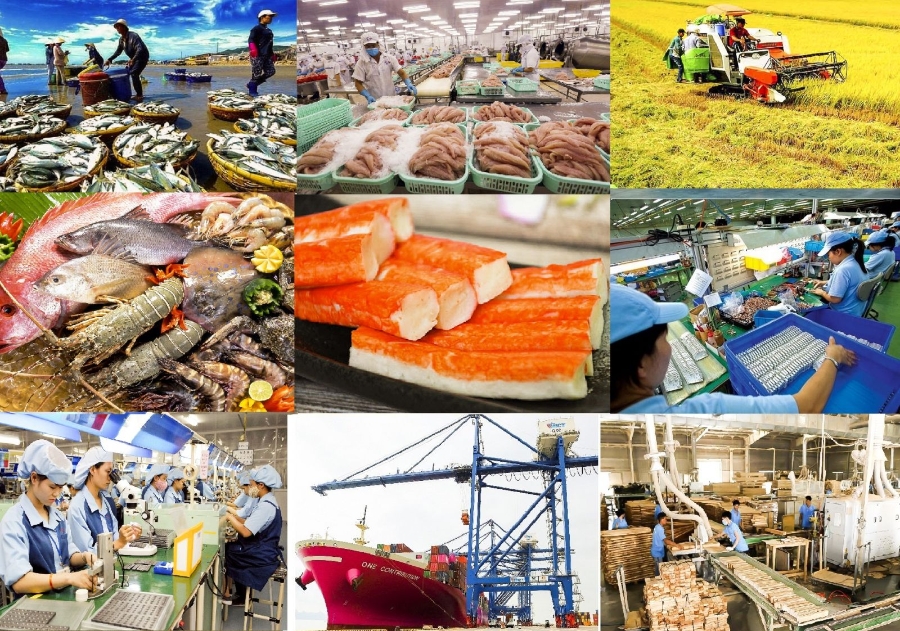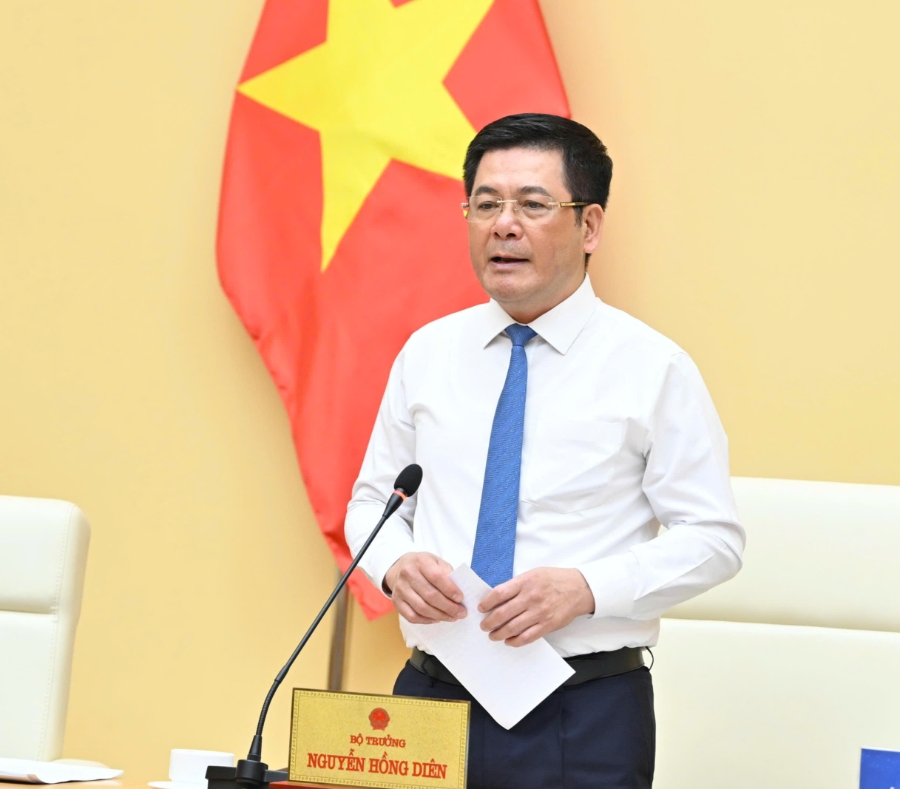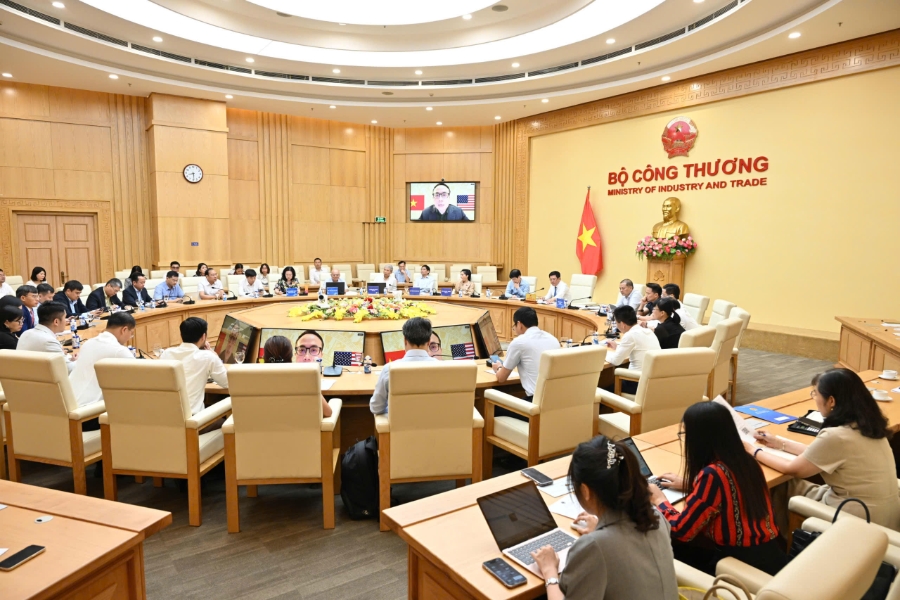
On September 9, 2025, in Hanoi, Minister of Industry and Trade Nguyễn Hồng Diên chaired the August 2025 Trade Promotion Coordination Conference with Vietnam's overseas trade offices, under the theme: “Diversifying export markets and products, diversifying import sources to boost import-export turnover growth in 2025.”
CHALLENGES REMAIN IN THE FINAL FOUR MONTHS
Speaking at the conference, Minister Nguyễn Hồng Diên noted that Vietnam's import-export activities in August 2025 continued to show positive growth momentum.
Specifically, export turnover in August was estimated at 42.23 billion USD, bringing the total for the first eight months of 2025 to 304.8 billion USD—an increase of 14.4% compared to the same period in 2024, meeting and exceeding the export growth target.
On the import side, August saw 40.02 billion USD in turnover, with the eight-month total reaching 292.33 billion USD, up 18.75% year-on-year.
As a result, Vietnam recorded a trade surplus of approximately 12.47 billion USD after the first eight months of 2025.

By industry structure, agriculture, forestry, and fisheries continued to contribute positively, with export turnover in the first eight months of 2025 estimated at 28.54 billion USD, up 12.7% year-on-year.
The processing and manufacturing sector remained the main driver, accounting for over 86% of total export value and maintaining a strong growth momentum, with an average increase of around 15% compared to the same period in 2024.
The fuel and mineral group posted export revenue of 1.7 billion USD, down 38.5%.
These results reflect the coordinated efforts of ministries, sectors, localities, and the business community under the close guidance of the Government, thereby sustaining import-export growth momentum.
Despite the positive outcomes, Minister of Industry and Trade Nguyễn Hồng Diên warned that the last four months of the year will continue to present significant challenges for export activities.
Geopolitical and economic volatility is having a deep impact on global trade, posing continued challenges for Vietnam's imports and exports in 2025 and the years ahead.
Specifically, the international trade environment is becoming increasingly complex, with risks related to policy changes, tariffs, and supply chain disruptions.
Unpredictable developments regarding U.S. countervailing duties on Vietnam and other countries could affect the production and export of several key sectors in Vietnam.
In addition, global consumer demand is declining, leading to a drop in export orders and making it harder for businesses to expand into new markets.
Logistics costs have risen sharply due to maritime transport instability, particularly surcharges imposed by international shipping lines and disruptions at key chokepoints, prolonging delivery times and straining supply chains.
Vietnamese exporters also face fierce competition from countries like India, Bangladesh, and Indonesia, which have cost advantages. This exerts significant pressure on Vietnam’s core export sectors such as textiles, footwear, and wood products.
At the same time, export markets are tightening environmental and renewable energy requirements, forcing Vietnamese businesses to accelerate their transition and adaptation processes.
Therefore, according to Minister Nguyễn Hồng Diên, in order to meet the Government’s export growth target of 12%, the country must achieve at least 150 billion USD in export turnover during the final four months of the year — averaging over 37.5 billion USD per month.
This is an extremely demanding task, requiring high determination and a unified, strong, and effective effort from the entire political system, the business community, trade associations, and especially Vietnam's overseas trade offices.
SPECIFIC SOLUTIONS FOR EACH MARKET GROUP
To promote market development, address difficulties, and support businesses in boosting exports, the Minister of Industry and Trade called on trade offices, ministries, sectors, local authorities, businesses, and industry associations to coordinate closely and focus on effectively implementing several key tasks.
The Minister emphasized the critical role of Vietnam’s overseas trade offices in supporting, connecting, and expanding markets for Vietnamese exports.
Accordingly, trade offices should closely monitor market trends and trade policies in host countries and provide timely recommendations to the Party, Government, Ministry of Industry and Trade, other relevant ministries, the business community, and industry associations for appropriate policy adjustments.
At the same time, they must build and maintain strong relationships with foreign partners and international organizations to create new cooperation opportunities.
The Ministry also called for stronger promotion efforts through all available channels—both online and in-person—particularly in connecting domestic enterprises with import-export companies abroad. This will help improve Vietnam’s export-import capacity, diversify supply sources and export markets, and reduce dependence on a single or limited number of markets.
Further cooperation with potential trade partners should be pursued through FTAs and new export markets, especially those less affected by trade conflicts.
This will help Vietnamese enterprises become more proactive in production and exports and enhance their participation in global supply chains.

Specifically, for export markets showing negative growth, the Minister instructed Vietnam’s overseas trade offices to urgently review and analyze the causes of the decline and propose recovery measures to bring export turnover back to at least last year’s levels, with the goal of returning to positive growth.
They are also required to propose trade promotion activities for 2026 tailored to each market and submit reports to the Ministry by September 15, 2025.
At the same time, trade offices are to proactively engage with local authorities, industry associations, distribution networks, and major importers in host countries to address trade barriers and non-tariff measures, restore orders, and identify and expand markets for new products.
For markets with low growth (from 0–5%), the Minister directed trade offices to analyze and clearly identify potential sectors and product groups that still have growth potential. Based on that, they must propose specific measures to effectively tap into that potential and boost exports to achieve a minimum growth rate of 8.5%, with reports also due by September 15, 2025.
Minister Nguyễn Hồng Diên also requested that from now until the end of the year, each overseas trade office must organize at least one B2B trade connection event per month, either online or in person.
They are also expected to actively support Vietnamese business delegations in visiting and signing contracts abroad, or assist foreign business delegations visiting Vietnam for trade and contract signing.
For markets with moderate growth (5–10%), the goal is to maintain momentum. Trade offices are to support businesses in expanding market share, with a particular focus on competitive products. They are also encouraged to capitalize on existing FTAs to promote new export items, aiming to raise the annual export growth rate in these markets to at least 12%.
For markets with high growth (above 10%), the Minister emphasized the importance of sustaining current growth levels and ensuring these markets continue to play a leading role in driving overall export performance.
The goal is to push annual growth beyond 15% by maintaining strong relationships with major retailers, distribution chains, and key importers.
Minister Nguyễn Hồng Diên expressed hope that following this trade coordination conference, Vietnam’s domestic production and international trade will flourish, achieving and exceeding the targets set by the Party and the State: export-import growth of at least 12%, contributing 8.3–8.5% to GDP growth in 2025 and laying the foundation for sustained growth of 10% or more in the following years.
Source: vneconomy.vn




